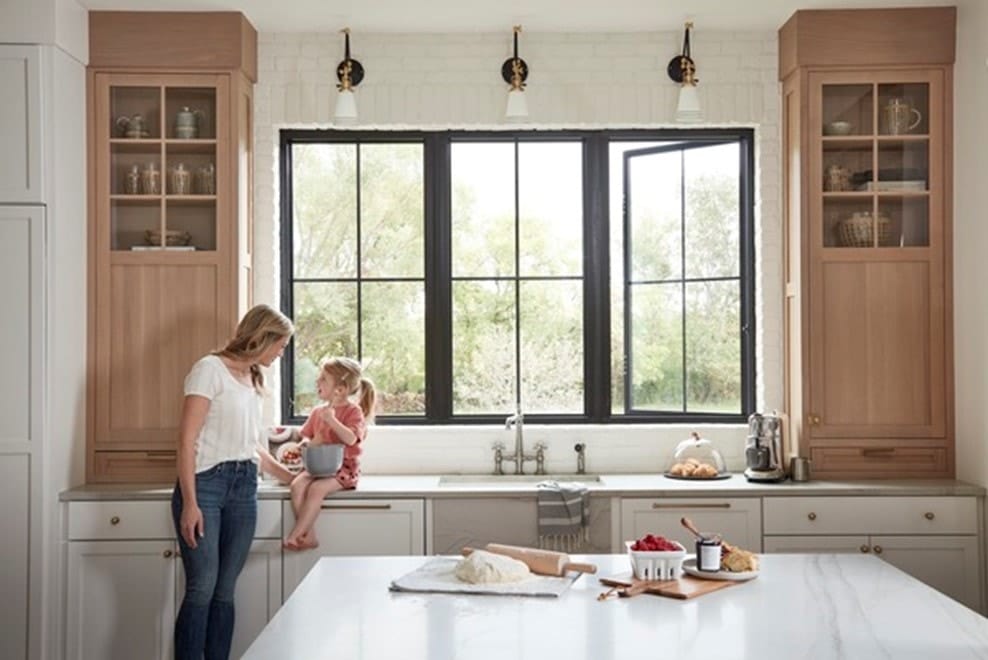In the architectural design and home improvement world, the debate between crank windows and sliding windows has been ongoing for decades. Both types of windows offer unique advantages and disadvantages, and deciding between the two is a matter of personal preference, functionality, and aesthetic appeal. In this comprehensive analysis, we delve into the intricacies of crank and sliding windows, exploring their features, benefits, drawbacks, and the factors to consider when choosing between them.
Crank Windows:
Crank windows, also known as casement windows, are hinged at the side and open outward with the help of a crank mechanism. This design allows for full ventilation and unobstructed views when the window is open. Crank windows are often favored for their classic appearance, ease of operation, and superior energy efficiency.
One of the primary advantages of crank windows is their excellent sealing properties. When closed, the sash presses tightly against the frame, creating a weatherproof barrier that helps prevent drafts, moisture intrusion, and energy loss. This tight seal also enhances sound insulation, making crank windows an ideal choice for homes located in noisy environments.
Additionally, crank windows offer versatility in terms of design and placement. They can be installed singly or in pairs, and their outward-opening mechanism allows for easy cleaning from the inside. This feature is particularly beneficial for windows located in hard-to-reach areas, such as above kitchen sinks or in tall living room spaces.
However, crank windows also have their drawbacks. The protruding crank mechanism can interfere with window treatments and obstruct exterior walkways or patio areas when opened fully. Furthermore, their outward swing may not be suitable for narrow passages or spaces with limited clearance.
Sliding Windows:
Sliding windows, also referred to as gliding windows, operate by moving horizontally along a track. Unlike crank windows, sliding windows do not require any outward clearance, making them an excellent choice for areas with limited space or where exterior obstacles are a concern.
One of the key benefits of sliding windows is their simplicity and ease of use. With no cranks or hinges to operate, sliding windows offer smooth, effortless operation with just a gentle push or pull. This makes them ideal for homeowners seeking hassle-free functionality and minimal maintenance requirements.
Sliding windows are also known for their sleek, modern appearance and ability to complement a variety of architectural styles. Their large, unobstructed glass panes provide ample natural light and panoramic views, making them popular choices for living rooms, bedrooms, and other areas where visibility and aesthetics are important.
Moreover, sliding windows are space-efficient, making them ideal for rooms where maximizing usable space is a priority. Their horizontal design allows for flexible placement options, including side-by-side configurations for expansive openings or stacked arrangements for vertical spaces.
Despite their many advantages, sliding windows have some limitations. One common concern is their potential for air leakage and reduced energy efficiency compared to crank windows. While advancements in window technology have improved their sealing capabilities, sliding windows may still be more prone to drafts and heat transfer than their crank counterparts.
Furthermore, sliding windows typically have smaller opening sizes compared to crank windows, limiting ventilation options, especially in areas where cross-ventilation is desired.
Choosing the Right Window:
When deciding between crank windows and sliding windows, several factors should be taken into consideration, including:
- Functionality: Consider how you intend to use the window and whether the operating mechanism aligns with your preferences and lifestyle. If easy operation and unobstructed views are priorities, sliding windows may be the better choice. However, if energy efficiency and superior sealing are paramount, crank windows may be more suitable.
- Space Constraints: Assess the available space around the window opening and determine whether an outward-swinging crank window or a sliding window would be more practical. In tight or high-traffic areas, sliding windows may offer greater convenience and safety by eliminating the need for clearance.
- Aesthetic Preferences: Take into account the architectural style of your home and the visual impact of the window design. Crank windows are often preferred for their classic charm and traditional appeal while sliding windows lend a contemporary, streamlined look to modern residences.
- Energy Efficiency: Evaluate the energy performance ratings of both crank windows and sliding windows, including factors such as U-factor, Solar Heat Gain Coefficient (SHGC), and air leakage. Choose windows with high-performance glazing and weatherstripping to minimize heat loss and maximize energy savings.
- Budget: Compare the cost of installation, maintenance, and long-term energy savings associated with crank windows and sliding windows. While sliding windows may have lower upfront costs and easier upkeep. Crank windows could offer greater returns on investment in terms of energy efficiency and durability.
Ultimately, the decision between crank windows and sliding windows boils down to personal preference, practical considerations, and the specific requirements of your home. Whether you opt for the timeless elegance of crank windows or the sleek functionality of sliding windows. Investing in high-quality, well-installed windows can enhance your home’s comfort, aesthetics, and value for years to come.

